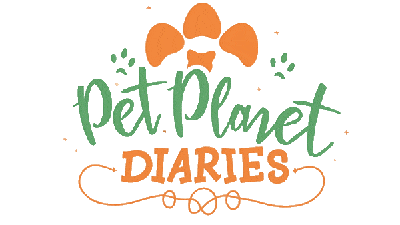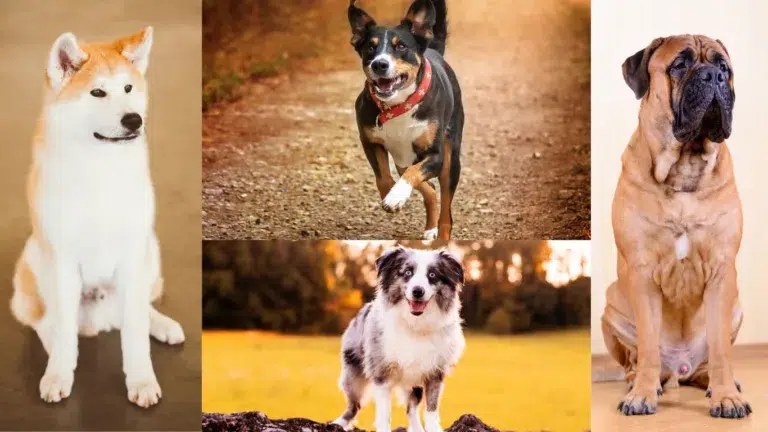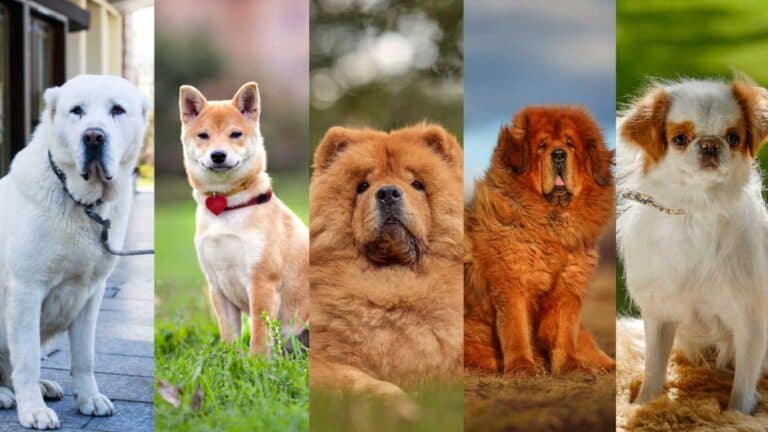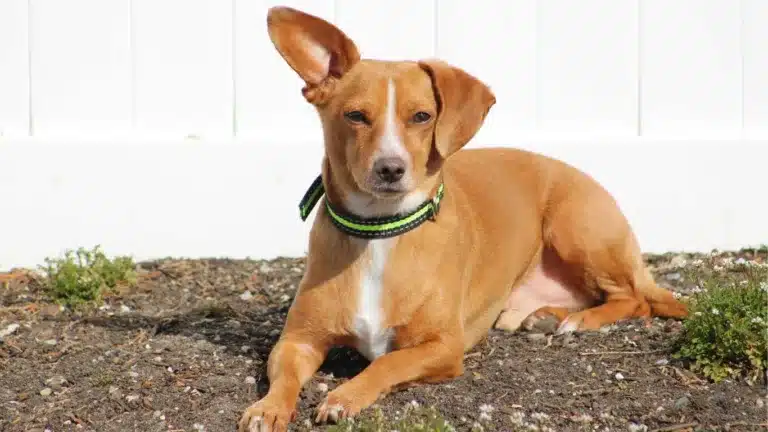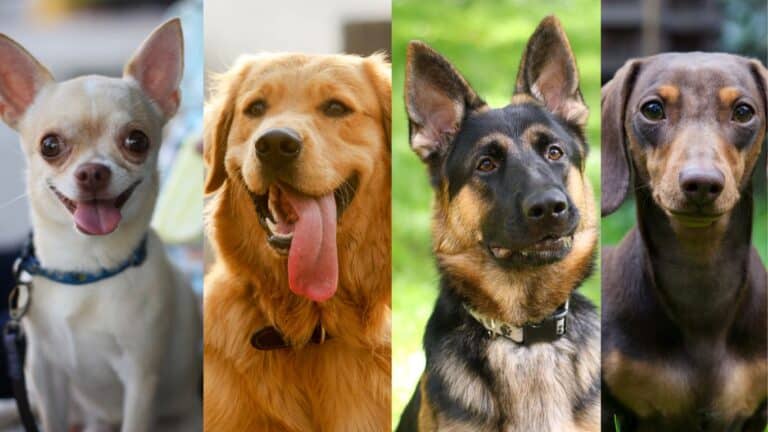For centuries, dogs have been our beloved companions, and as responsible pet parents, we strive to understand their needs and emotions. Canine communication plays a significant role in our interaction with dogs, and one of the most prominent signals they use is their tail language. “Dog tail meanings” provide valuable insights into a dog’s emotional state, conveying a range of emotions from happiness to fear, and mastering this form of communication can deepen our connection with our furry friends.
While many people may believe that a wagging tail always means a happy dog, tail language is much more nuanced than that. The position, movement, and speed of a dog’s tail can provide valuable insights into their emotional state and intentions. By learning to interpret their tail language accurately, we can better understand their needs, feelings, and behaviors.
In this guide, we will explore the fascinating world of canine tail language. We will delve into the importance of tail positions, the role of tail wagging, and the various meanings behind different tail positions. By the end, you’ll be equipped with the knowledge to master dog tail language and enhance your communication with your canine companion.
dog tail meanings: Core Insights to-
Understanding Canine Tail Language
To truly understand your dog, it’s essential to learn their body language, and the tail is an integral part of that. A dog’s tail is not just a cute appendage; it serves as a communication tool, expressing their emotions and intentions. Tail language includes the position, movement, and speed of the tail, which can vary depending on the dog’s breed, individual personality, and the situation at hand.
Tail wagging is the most well-known aspect of tail language, and it can convey a range of emotions. However, it’s important to note that tail wagging alone does not always indicate happiness. A wagging tail can signify excitement, fear, or even aggression, depending on the context and other body language cues.
By observing your dog’s tail language, you can gain valuable insights into their emotional state. For example, a high tail wag with a relaxed body posture typically indicates a happy and confident dog. On the other hand, a tucked tail suggests fear or submission, while a stiff tail can signify alertness or potential aggression.
It’s important to remember that tail language should be interpreted in conjunction with other body language cues. Pay attention to your dog’s facial expressions, ear position, and overall body posture to get a complete picture of their emotions and intentions. By understanding and responding to your dog’s tail language, you can strengthen your bond and create a deeper level of communication.
Importance of Tail Positions in Dogs
The position of a dog’s tail is a crucial component of their body language and can provide valuable insights into their emotional state. Understanding the significance of different tail positions is key to deciphering your dog’s emotions and ensuring their well-being.
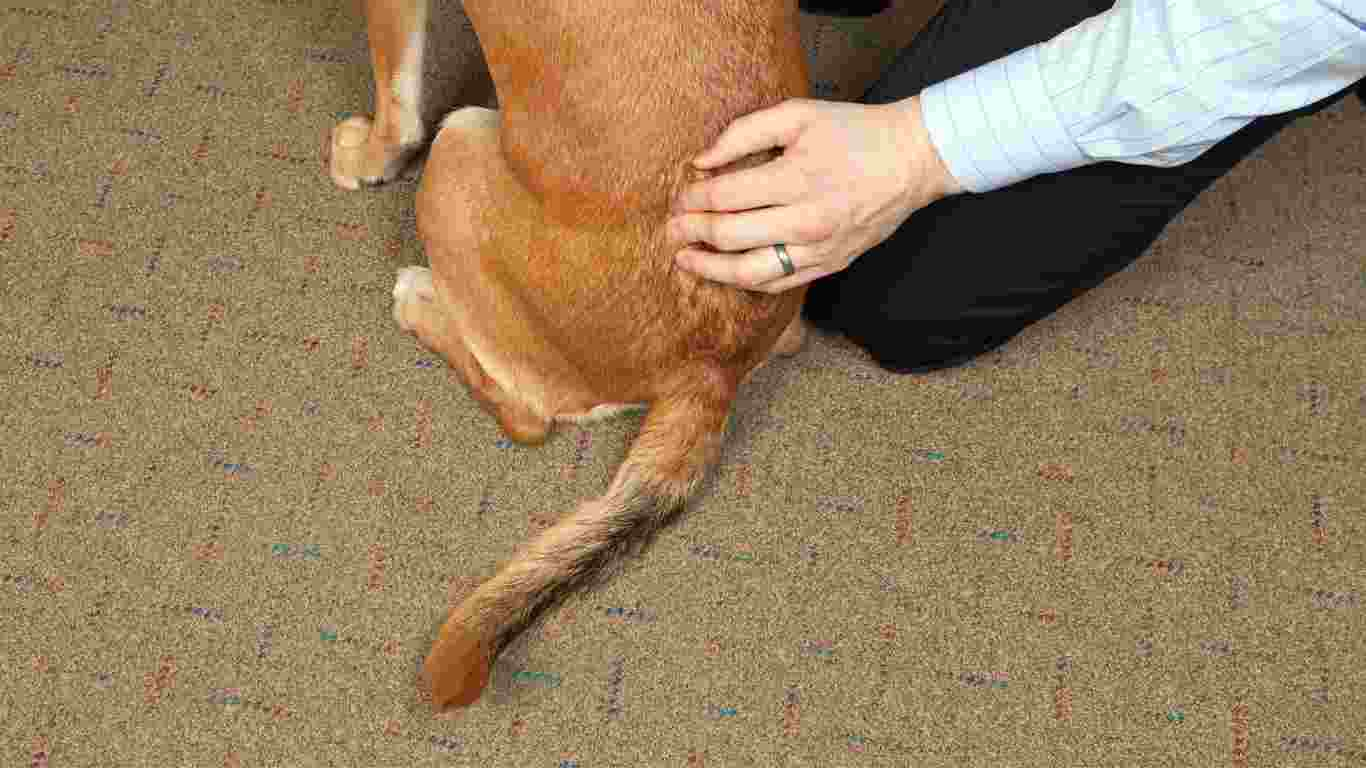
A high tail position is often associated with a happy and confident dog. When a dog holds their tail high and wagging, it signifies a positive and friendly demeanor. This tail position is commonly seen when a dog is excited to see their favorite person or engaging in play. It’s important to note that the speed of the wag can also indicate the intensity of their emotions.
On the other hand, a low or tucked tail position usually indicates negative feelings such as fear, anxiety, or submission. When a dog tucks their tail between their legs or holds it close to their body, it suggests they are feeling threatened or uncomfortable. It’s essential to create a safe and comforting environment for your dog when they exhibit these tail positions, ensuring they feel secure and supported.
By paying attention to your dog’s tail position, you can gauge their emotional well-being and address any negative feelings they may be experiencing. Creating a positive and nurturing environment can help alleviate their stress and promote a happier, more confident dog.
Role of Tail Wagging in Dog Communication
Tail wagging is a common behavior in dogs and plays a vital role in their communication with humans and other animals. While many people interpret a wagging tail as a sign of happiness, the meaning behind tail wagging is more nuanced and can vary depending on the context and other body language cues.
A wagging tail is often associated with positive emotions and can indicate a friendly, welcoming attitude. However, it’s important to consider the speed, direction, and height of the wag to accurately interpret its meaning. A fast and loose wag typically signifies excitement and joy, while a slower wag may indicate a calmer and more relaxed state.

It’s also crucial to consider other body language cues in conjunction with tail wagging. For example, a dog with a high wagging tail, along with a relaxed body posture, soft eyes, and open mouth, is likely expressing happiness and a friendly demeanor. On the other hand, a dog with a stiff wagging tail, accompanied by tense body muscles, hard eyes, and a closed mouth, may be exhibiting signs of aggression or discomfort.
By observing your dog’s tail wagging and considering it in the context of their overall body language, you can better understand their emotions and intentions. This understanding allows for effective communication and helps foster a strong bond between you and your canine companion.
Various Tail Positions and Their Meanings
Understanding the various tail positions and their meanings is essential for interpreting your dog’s emotions accurately. By recognizing different tail positions, you can gain insights into your dog’s thoughts and intentions in various situations. From high positioning and wagging tails to downward and tucked tails, each position conveys a specific message about your dog’s emotional state. Let’s explore these tail positions in more detail to deepen our understanding of canine tail language.
High Positioning, Wagging Tail
A high tail position with a wagging tail is often a sign of happiness and positive feelings in dogs. This tail position indicates a confident and friendly demeanor, with the wagging tail adding an element of excitement and joy. Here are a few key points to understand about high positioning and wagging tails:

- A high tail position signifies confidence and a positive emotional state.
- The wagging motion adds an element of excitement and happiness.
- Dogs with a high positioning and wagging tail are usually alert and open to interaction.
- This tail position is often accompanied by other whole-body actions, such as jumping, spinning, or tapping paws, expressing the dog’s enthusiasm and anticipation.
It’s important to note that while a high tail and wagging tail generally indicate positive feelings, it’s essential to consider the overall body language of the dog to accurately interpret their emotions and intentions.
High Positioning, Tilted Upwards
When a dog holds their tail high but tilted upwards, it can convey a sense of dominance and alertness. This tail position often occurs when a dog is approaching a potentially new or unfamiliar situation, and they want to assert their presence. Here’s what you need to know about high positioning and tilted upwards tails:
- A high tail position with a slight tilt upwards indicates a dog’s confidence and assertiveness.
- The dog is alert and ready to interact but may also be assessing the situation and potential threats.
- This tail position is commonly observed in dog parks or when meeting new dog friends.
- It’s important to pay attention to other body language cues to ensure that the dog’s assertiveness does not escalate into aggression.
By understanding the meaning behind a high positioning and tilted upwards tail, you can better gauge your dog’s confidence level and ensure positive interactions with other dogs and humans.
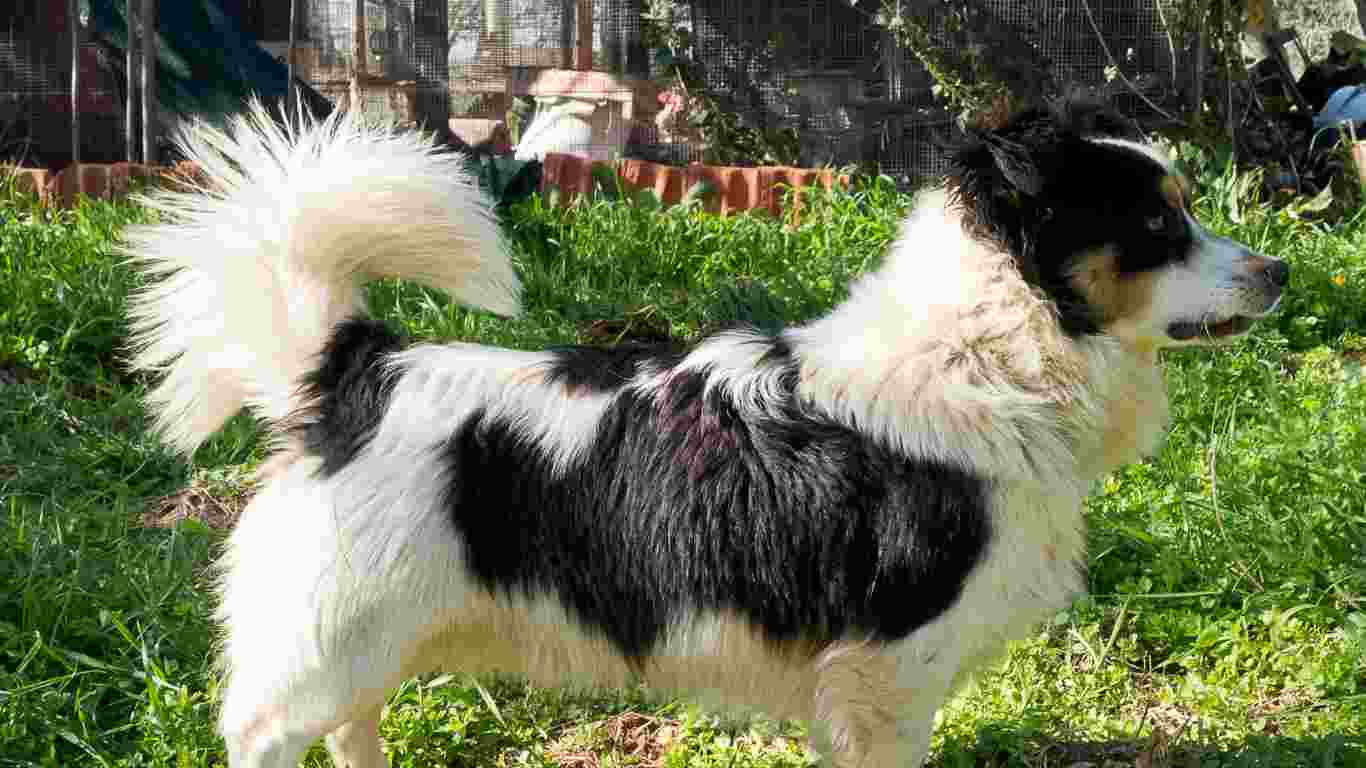
High Positioning, Curled Tail
Some dogs have naturally curled tails, which can slightly alter the meaning of a high tail position. A curled tail that is held high usually indicates a happy, confident, and comfortable dog. Here’s what to know about high positioning and curled tails:
- Dogs with naturally straight tails that curl upwards when held high are expressing a positive emotional state.
- The curling of the tail adds an element of breed-specific behavior and individual tail talk.
- This tail position is commonly seen in breeds like Pugs, Basenjis, Huskies, and Pomeranians.
- The alert posture, combined with a high, curled tail, signifies a dog’s confidence and enjoyment of the situation.
When observing a dog with a high positioning and curled tail, it’s important to consider their overall body language to accurately interpret their emotions and intentions.
High Position, Relaxed Wag
A high tail position with a relaxed wag indicates a happy and relaxed dog without excessive excitement. This tail position is often observed when a dog is in a calm and content state. Here’s what you need to know about a high position and relaxed wag:
- A slow wag at a high position suggests a dog’s happiness and relaxation.
- The dog is not overly excited but is still expressing positive emotions.
- This tail position is often seen when a dog is waking up from a nap or when their human returns home.
- It can also occur when a dog is unexpectedly given attention or affection.

A high position and relaxed wag reflect a dog’s comfortable and content demeanor. By recognizing this tail language, you can understand your dog’s relaxed state and respond appropriately.
Stiff Tail: A Sign of Alertness
A stiff tail, regardless of its height or position, usually indicates a high alert and potentially negative emotions in a dog. When a dog’s tail becomes rigid and immovable, it suggests a heightened state of alertness and tension. Here’s what you need to know about a stiff tail:
- A stiff tail is often a sign that a dog is behaving very cautiously and is on high alert.
- The dog’s body language may become tense, and their attention might be focused on a potential threat.
- This tail position can occur when a dog is meeting someone new or encountering a suspicious object or environment.
- It’s crucial to approach a dog with a stiff tail cautiously and ensure their comfort and safety.
A stiff tail serves as a warning sign that a dog may not be comfortable or at ease in a particular situation. It’s essential to respect their boundaries and provide them with a secure and supportive environment.
Downward Tail: Indicating Fear or Submission
When a dog’s tail is held low and downwards, it often signifies fear or submission. This tail position indicates that a dog is feeling threatened or uncomfortable in a particular situation. Here’s what you need to know about a downward tail:
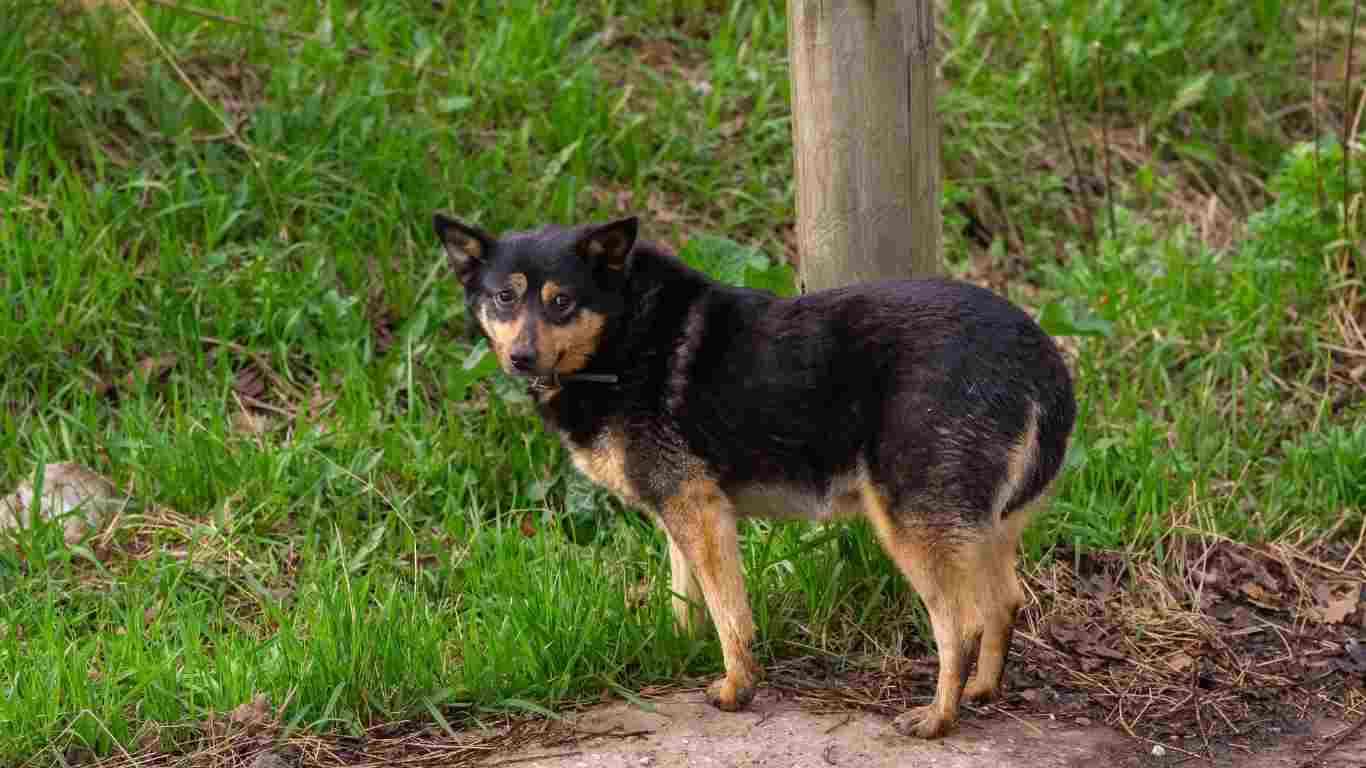
- A downward tail position suggests that a dog is experiencing fear or uncertainty.
- The dog may exhibit a submissive posture, such as crouching or lowering their body.
- This tail position can occur when a dog is around unfamiliar dogs or people or in new environments.
- It’s important to create a safe and comforting environment for a dog with a downward tail, ensuring their emotional well-being.
By recognizing a downward tail position, you can address your dog’s fears and help them feel secure and supported. It’s crucial to approach them calmly and avoid any actions that may escalate their anxiety.
Tucked Tail: A Sign of Stress or Fear
A tucked tail is a clear indicator that a dog is experiencing stress, fear, or anxiety. When a dog tucks their tail tightly between their legs, it suggests they are trying to make themselves appear smaller and less threatening. Here’s what you need to know about a tucked tail:
- A tucked tail is one of the most obvious signs that a dog is scared or anxious.
- The dog may exhibit other stress indicators, such as trembling, panting, or avoiding eye contact.
- This tail position often occurs in crowded locations, around perceived threats, or during loud and intrusive noises.
- It’s crucial to provide comfort and reassurance to a dog with a tucked tail, allowing them to feel safe and secure.
By understanding the meaning behind a tucked tail, you can respond appropriately and help your dog cope with their stress or fear. Creating a calm environment and offering gentle reassurance can go a long way in supporting their emotional well-being.

Tail Wags and What They Signal
Tail wagging is a significant aspect of canine communication, and understanding the different types of tail wags can provide valuable insights into a dog’s emotions. From rapid wagging to slow wagging, each wag carries a unique message that can help you decipher your dog’s intentions. Let’s explore the various tail wags and what they signal.
Rapid Wagging
A rapid wagging tail is often associated with excitement and positive feelings in dogs. This type of wag indicates a high level of emotional arousal. Here’s what you need to know about rapid wagging:
- A fast and loose wag suggests that a dog is highly excited and experiencing positive emotions.
- The speed of the wag can vary, with a faster wag indicating more intense excitement.
- This tail wag is commonly seen when a dog is anticipating a favorite activity or interacting with their favorite person.
- It’s important to approach a dog with a rapidly wagging tail cautiously, as excessive excitement can sometimes lead to unintentional jumping or nipping.
By recognizing the signs of excitement in a dog’s rapid wagging tail, you can engage with them in a positive and controlled manner, ensuring both their safety and enjoyment.
Slow Wagging
A slow wagging tail often indicates uncertainty or appeasement in a dog. This type of wag suggests that the dog is not as excited and is exhibiting a calmer emotional state. Here’s what you need to know about slow wagging:
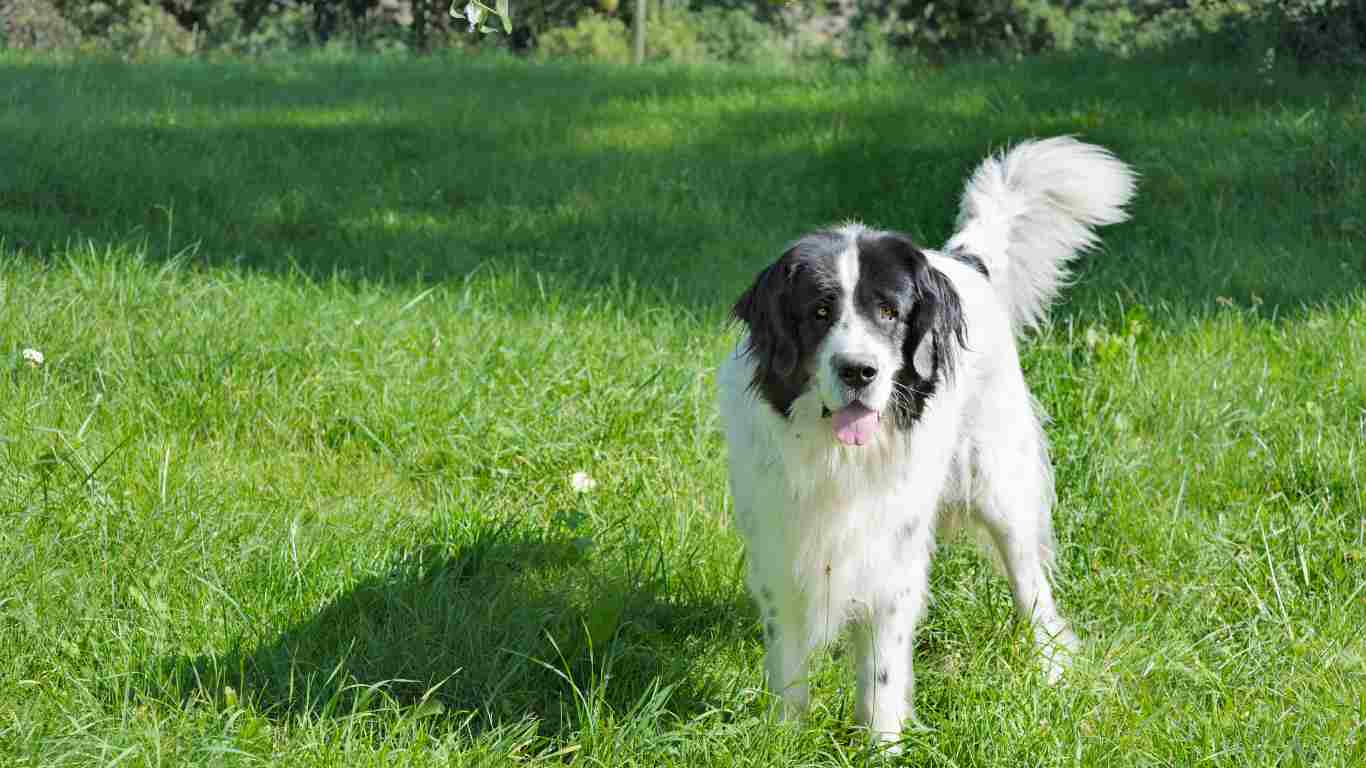
- A slow wag suggests that a dog is in a more relaxed and subdued emotional state.
- This tail wag is often seen when a dog is unsure about a situation or wants to communicate friendliness and non-threatening behavior.
- It can also be a form of appeasement behavior, signaling to another dog or person that the dog is not a threat.
- It’s important to approach a dog with a slow wagging tail calmly and allow them to dictate the pace of interaction.
By recognizing the signs of uncertainty or appeasement in a dog’s slow wagging tail, you can create a comfortable and secure environment for them, promoting positive interactions.
Wagging to the Right vs. Left
The direction of a dog’s tail wag can provide valuable insights into their emotional state. Studies suggest that dogs tend to wag their tails more to the right when they are feeling positive emotions and more to the left when they are experiencing negative emotions. Here’s what you need to know about tail wagging direction:
- Tail wagging to the right typically indicates positive feelings, such as happiness, excitement, or friendliness.
- Tail wagging to the left is often associated with negative emotions, such as fear, anxiety, or discomfort.
- The direction of the wag is related to the activation of the brain’s hemispheres, with the left side of the brain controlling movement on the right side of the body and vice versa.
- A text table is provided below to summarize the emotional states associated with tail wagging direction:

| Tail Wagging to the Right | Tail Wagging to the Left |
| Happiness | Fear |
| Excitement | Anxiety |
| Friendliness | Discomfort |
By observing the direction of your dog’s tail wag, you can gain insights into their emotional state and respond accordingly to ensure their well-being.
Other Factors Influencing Tail Movement
While tail positions and wagging are essential aspects of tail language, other factors can also influence a dog’s tail movement. Breed-specific tail behaviors and the impact of age and health on tail movements can provide additional insights into a dog’s communication. Let’s explore these factors in more detail.
Breed-Specific Tail Behaviors
Different dog breeds have distinct tail behaviors, with some breeds having naturally high or low tail positions. Understanding breed-specific tail behaviors can help you interpret your dog’s communication more accurately. Here are a few examples:
- Breeds like Pugs, Basenjis, Huskies, and Pomeranians have naturally curled tails, which can slightly alter their tail language.
- Breeds with naturally high tails, such as Greyhounds and Whippets, may exhibit different tail behaviors compared to breeds with naturally low tails, such as Bulldogs or Basset Hounds.
- It’s important to consider your dog’s specific breed traits when interpreting their tail language, as their tail positions may differ from the general guidelines.
By recognizing breed-specific tail behaviors, you can better understand your dog’s communication and ensure a strong bond with them.

Impact of Age and Health on Tail Movements
Age and health can also influence a dog’s tail movements and communication. Understanding how these factors impact tail language can help you address your dog’s specific needs. Here’s what you need to know:
- Older dogs may exhibit changes in their tail movements due to age-related conditions, such as arthritis or muscle weakness.
- Health issues or injuries can affect a dog’s tail movement, leading to changes in their tail language.
- It’s important to consult a veterinarian if you notice any significant changes in your dog’s tail behavior, as it can be an indicator of an underlying health problem.
- By considering your dog’s age and health, you can provide appropriate care and support to ensure their well-being and comfort.
By recognizing the impact of age and health on tail movements, you can better understand and address your dog’s specific needs, promoting their overall health and happiness.
Misinterpretations of Tail Language
While tail language is a valuable form of communication, it can be misinterpreted at times, leading to misunderstandings and potential conflicts. Understanding the common misconceptions about tail wagging and the challenges of interpreting tailless dogs’ communication can help you navigate these issues. Let’s explore these misinterpretations in more detail.
Common Misconceptions About Tail Wagging
Tail wagging is often misunderstood as a universal sign of happiness in dogs. However, this oversimplification can lead to misinterpretations of a dog’s emotional state. Here are a few common misconceptions about tail wagging:

- All tail wags indicate happiness: Tail wagging can convey a range of emotions, including fear, anxiety, and aggression. It’s crucial to consider other body language cues and the context to accurately interpret a dog’s emotional state.
- Faster wagging always means more happiness: While a fast wag can indicate excitement and joy, it can also signify a high level of arousal, which may not always be positive. It’s important to consider the overall body language of the dog to gauge their emotional well-being accurately.
By dispelling these misconceptions and understanding the complexities of tail wagging, you can better interpret your dog’s communication and respond appropriately.
Understanding Tailless Dogs and Their Communication
Tailless dogs, whether naturally tailless or docked, present unique challenges in interpreting their communication. While tail language is an essential aspect of canine communication, tailless dogs rely on other body language cues to express their emotions. Here’s what you need to know:
- Tailless dogs use their body language, facial expressions, and vocalizations to convey their emotions and intentions.
- Observing their overall body posture, ear position, and eye contact can provide insights into how they are feeling.
- It’s important to consider each dog as an individual and learn their specific body language cues to understand their communication accurately.
By focusing on other body language cues in tailless dogs, you can still effectively communicate and bond with them, ensuring a strong connection and understanding.
Join the Pet Planet Diaries
Sign up for our newsletter to get the latest tips, stories, and exclusive insights into the wonderful world of pets.
Final Remarks
Understanding canine tail language is essential for effective communication with your furry friend. The position, movement, and wagging of a dog’s tail can convey various emotions and messages. By paying attention to these signals, you can better understand how your dog is feeling and respond accordingly.
Keep in mind that tail language can vary depending on the breed and individual dog. For example, a high, relaxed wagging tail usually indicates a friendly and happy dog, while a stiff, downward-tucked tail may indicate fear or submission. It’s also important to consider other factors like breed-specific behaviors and the impact of age and health on tail movements.
By mastering dog tail language, you can strengthen the bond with your canine companion and ensure clear and effective communication. So next time you interact with your dog, pay attention to their tail and let it guide you in understanding their needs and emotions.
With a passion for canine companionship and a wealth of experience spanning 15 years, Dan Schroeder stands as a distinguished authority in the realm of dog health, training, and beyond.
From an early age, Dan found solace and joy in the company of four-legged friends, sparking a lifelong dedication to understanding and enhancing the lives of dogs. His journey into the world of canine expertise began over a decade and a half ago, marked by a relentless pursuit of knowledge in the fields of dog health, behavior, and training.
